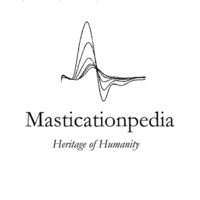Difference between revisions of "Index du livre"
| Line 59: | Line 59: | ||
*[[6° Cas clinique : Neuropathie sensorielle et motrice à début facial]] | *[[6° Cas clinique : Neuropathie sensorielle et motrice à début facial]] | ||
*[[7° Cas clinique : Tumeur du tronc cérébral dans Douleur orofaciale]] | *[[7° Cas clinique : Tumeur du tronc cérébral dans Douleur orofaciale]] | ||
'''[[Conclusion de la section 'Science normale']]''' | |||
</div> | </div> | ||
<div> | <div> | ||
<p style="font-size: 150%; color: black;">'''Crise du paradigme'''</p> | <p style="font-size: 150%; color: black;">'''Crise du paradigme'''</p> | ||
'''[[Critères diagnostiques de recherche (RDC)]]''' | '''[[Critères diagnostiques de recherche (RDC)]]''' | ||
* Masticatory cycles | *Masticatory cycles | ||
** Jaw opening width | **Jaw opening width | ||
** Speed of mandibular movement | **Speed of mandibular movement | ||
** Complexity of chewing kinematics | **Complexity of chewing kinematics | ||
'''Temporomandibular Joint''' | '''Temporomandibular Joint''' | ||
* Computerized Tomography of the TMJ | *Computerized Tomography of the TMJ | ||
* Magnetic resonance imaging of the TMJ | *Magnetic resonance imaging of the TMJ | ||
'''Mandibular kinematic replicators''' | '''Mandibular kinematic replicators''' | ||
* Advantages and limits of Kinematic replicators | *Advantages and limits of Kinematic replicators | ||
** Pantography | **Pantography | ||
** Axiography | **Axiography | ||
** Electrognatography | **Electrognatography | ||
'''Transcutaneous Electric Nerve Stimulation''' | '''Transcutaneous Electric Nerve Stimulation''' | ||
* Free way space before stimulation | *Free way space before stimulation | ||
* Free way space after stimulation | *Free way space after stimulation | ||
* Closing trajectory from TENS | *Closing trajectory from TENS | ||
'''Electromyography (EMG)''' | '''Electromyography (EMG)''' | ||
* EMG Interferential pattern | *EMG Interferential pattern | ||
* EMG at rest position | *EMG at rest position | ||
* Quantitative analysis of the EMG | *Quantitative analysis of the EMG | ||
** Fourier transform | **Fourier transform | ||
** Wavelett | **Wavelett | ||
'''Conclusions to the Paradigm crisis chapter''' | '''Conclusions to the Paradigm crisis chapter''' | ||
* Incompleteness in the 'Research Diagnostic Criteria' | *Incompleteness in the 'Research Diagnostic Criteria' | ||
* Need for a new paradigm | *Need for a new paradigm | ||
</div> | </div> | ||
| Line 106: | Line 106: | ||
<p style="font-size: 150%;">'''Science extraordinaire'''</p> | <p style="font-size: 150%;">'''Science extraordinaire'''</p> | ||
'''Masticatory Neurophysiology''' | '''Masticatory Neurophysiology''' | ||
* Center of masticatory pattern | *Center of masticatory pattern | ||
* Mesencephalic mecchanism | *Mesencephalic mecchanism | ||
* Trigeminal Motor nucleus | *Trigeminal Motor nucleus | ||
'''Sensory network''' | '''Sensory network''' | ||
* Proprioceptive mechanisms | *Proprioceptive mechanisms | ||
** Neuromuscular spindles | **Neuromuscular spindles | ||
** Sensory mechanisms from the depressor muscles | **Sensory mechanisms from the depressor muscles | ||
** Golgi Tendon organs | **Golgi Tendon organs | ||
* Role of impulses from the neck muscles | *Role of impulses from the neck muscles | ||
* Periodontal and oral Sensory Factor | *Periodontal and oral Sensory Factor | ||
* Pharyngeal sensory closure | *Pharyngeal sensory closure | ||
* Sensory factors of the TMJ | *Sensory factors of the TMJ | ||
'''Trigeminal System Connectivity''' | '''Trigeminal System Connectivity''' | ||
* Definition of the Fundamental Unit | *Definition of the Fundamental Unit | ||
* Structural and functional connectivity separation | *Structural and functional connectivity separation | ||
* Understanding of 'Emergent Behaviour' | *Understanding of 'Emergent Behaviour' | ||
* Connectivity measurement | *Connectivity measurement | ||
** Maximal Neural Energy Evoked | **Maximal Neural Energy Evoked | ||
** Bilateral Trigeminal neuromotor organic symmetry | **Bilateral Trigeminal neuromotor organic symmetry | ||
** Functional motor symmetry | **Functional motor symmetry | ||
** Normalization concept | **Normalization concept | ||
** Organic vs Functional Symmetry | **Organic vs Functional Symmetry | ||
** Neuro Gnathological Functions paradigm | **Neuro Gnathological Functions paradigm | ||
** New Clinical Index | **New Clinical Index | ||
</div> | </div> | ||
</div> | </div> | ||
Revision as of 18:47, 14 September 2024
Sciences normales
- Logique du langage médical
- Systèmes complexes
- Logique du langage médical : introduction à la probabilité de type quantique dans le système masticatoire
- Conclusions sur le statu quo dans la logique du langage médical concernant le système masticatoire
- 4° Cas clinique : Affections temporo-mandibulaires
- 5° Cas clinique : Activité électromyographique spontanée
Crise du paradigme
Critères diagnostiques de recherche (RDC)
- Masticatory cycles
- Jaw opening width
- Speed of mandibular movement
- Complexity of chewing kinematics
Temporomandibular Joint
- Computerized Tomography of the TMJ
- Magnetic resonance imaging of the TMJ
Mandibular kinematic replicators
- Advantages and limits of Kinematic replicators
- Pantography
- Axiography
- Electrognatography
Transcutaneous Electric Nerve Stimulation
- Free way space before stimulation
- Free way space after stimulation
- Closing trajectory from TENS
Electromyography (EMG)
- EMG Interferential pattern
- EMG at rest position
- Quantitative analysis of the EMG
- Fourier transform
- Wavelett
Conclusions to the Paradigm crisis chapter
- Incompleteness in the 'Research Diagnostic Criteria'
- Need for a new paradigm
Science extraordinaire
Masticatory Neurophysiology
- Center of masticatory pattern
- Mesencephalic mecchanism
- Trigeminal Motor nucleus
Sensory network
- Proprioceptive mechanisms
- Neuromuscular spindles
- Sensory mechanisms from the depressor muscles
- Golgi Tendon organs
- Role of impulses from the neck muscles
- Periodontal and oral Sensory Factor
- Pharyngeal sensory closure
- Sensory factors of the TMJ
Trigeminal System Connectivity
- Definition of the Fundamental Unit
- Structural and functional connectivity separation
- Understanding of 'Emergent Behaviour'
- Connectivity measurement
- Maximal Neural Energy Evoked
- Bilateral Trigeminal neuromotor organic symmetry
- Functional motor symmetry
- Normalization concept
- Organic vs Functional Symmetry
- Neuro Gnathological Functions paradigm
- New Clinical Index
